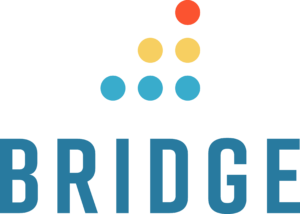Advantages Of Using Both Synchronous and Asynchronous Technologies In An Online Learning Environment
Synchronous Learning
In an online classroom environment many of the learning activities and expectations are similar to those found in a traditional classroom. These learning environments offer meaningful interactions in a face-to-face setting and are most commonly referred to as synchronous learning activities (Hrastinski, 2008; Harris et al., 2009; Simonson et al., 2012). Lectures, discussions, and lesson presentations occur at a specific point in time with the expectation that all students will be available to participate. Synchronous learning environments support learning and teaching and offer students and teachers with multiple ways of interacting, sharing, and the ability to collaborate and ask questions in real-time through synchronous learning technologies. Examples of synchronous online technology types include videoconferencing, webcasts, interactive learning models, and telephone conferences (Er et al., 2009; eLearners.com, 2012).
- Student Engagement
In addition to videoconferencing, webcasts, and telephone conferences other examples of synchronous technology types include virtual worlds and chat rooms (Er et al., 2009; eLearners.com, 2012). In order to successfully participate in these environment students must be engaged in student-learning, which is the most important learner characteristic a student can demonstrate. - Synchronous Collaboration
Studies show that the higher a learner perceives the level of collaboration the more satisfied they are with e-learning overall (Diaz & Entonado, 2009; Er et al., 2009). In both the traditional and online classroom environments, interaction and collaboration are identified as a major factor in successful learning outcomes (Bonk & Zhang, 2006; Martinez-Caro, 2011. In an online learning environment the teacher’s role becomes more about facilitating, guiding, and motivating the learner (Diaz & Entonado, 2009) and can be successfully achieved through feedback and collaboration. - Instructional Pacing
Online learning environments provide flexibility and offer students personalized learning opportunities (Lorenzo & Ittelson, 2005). Students learning online have the opportunity to express their thoughts without judgment or interruptions (Er et al., 2009). Online learning experiences can be developed to provide advanced educational opportunities for the learning needs of individual students.
Asynchronous Learning
In an asynchronous learning environment students are able to actively participate in their own learning, giving them the opportunity to interact with their peers, provide peer feedback, and reflect on the status of their personal learning goals and outcomes (Er et al., 2009; Harris et al., 2009; Simonson et al., 2012). In many learning environments there are learning activities and expectations that require students to create, synthesize, explain, and apply the content or skills being taught (Harris, Mishra, & Koehler, 2009; Simonson et al., 2012). Asynchronous technologies support learning and allow more time for student reflection, collaboration, and student-to-student interactions (Bonk & Zhang, 2006; Skylar, 2009; Meloni, 2010).
Sponsored content - article continues below
Trending Learning Management Systems (LMS)
According to Meloni (2010) asynchronous communication and learning is by far the more popular learning type because many of the learning tools are free, require minimal hardware, and are used at the student’s pace. Just as with synchronous learning, the growing increase in IT and online connections has expanded the online learning opportunities available. A number of educational benefits can be observed from the use of asynchronous technologies in an online learning environment including:
- enriched student products and portfolios,
- student and teacher collaboration, and
- learner specific pacing geared to the individual student needs (Hrastinski, 2008; Skylar, 2009; Meloni, 2010; eLearners.com, 2012).
- Student Portfolios
Electronic portfolios (e-folios) demonstrate a student’s skill and knowledge level over a specific topic. Online learners often create e-folios that combine text, images, presentations, video, audio, links, and a discussion space to demonstrate mastery of a specific content area or subject matter (Mason, Pegler, & Weller, 2004; Lorenzo & Ittelson, 2005; eLearners.com, 2012). Many institutions have begun viewing e-folios as a replacement for traditional classroom high stake assessments (Lorenzo & Ittelson, 2005). E-folios help facilitate the exchange of ideas, discourse, and subject area feedback between student and teacher creating a meaningful learning experience for the student (Lorenzo & Ittelson, 2005). Due to the success of these e-folios some higher education institutions have also started using them to document and archive student’s academic careers. - Asynchronous Collaboration
As with synchronous collaboration, studies have shown that collaboration increases overall student learning in online learning environments (Diaz & Entonado, 2009; Er et al., 2009). A sense of community is necessary to sustain the educational experience over time and this can be achieved through collaborative learning communities (Garrison & Kanuka, 2004). In this learning environment the teacher’s role is still about developing and facilitating a student’s learning experiences (Diaz & Entonado, 2009). This facilitation can be successfully achieved through asynchronous collaboration, allowing students to thoughtfully consider learning objectives because they have the time to critically synthesize their learning (Garrison & Kanuka, 2004; Bonk & Zhang, 2006). - Individualized Pacing
Asynchronous learning technologies have been defined as personalized learning tools (Lorenzo & Ittelson, 2005). With these tools, the teacher can assess what students understand and adapt future course assignments to facilitate a higher level and more in-depth understanding of the content (Bonk & Zhang, 2006; Hrastinski, 2008). These online learning environments create an opportunity for online students to become highly self-reflective (Bonk & Zhang, 2006). Perhaps most significantly, what is facilitated through the use of asynchronous tools provides a learning space where participants can confront debatable ideas and faulty thinking in more objective and reflective ways (Garrison & Kanuka, 2004).
Conclusion
It is clear from the research that the technologies associated with synchronous and asynchronous learning can improve the quality of student-teacher interactions, foster increased student engagement, and improve learning outcomes (Hastie, Hung, Chen, Kinsuk, 2010; Simonson et al., 2012). There are strengths and weaknesses to both designs. Some students like a synchronous online learning environment because they need face-to-face instruction. For other students, an asynchronous online learning environment provides more time to consider all sides of an issue before offering their own educated input. Both learning learning types have very unique benefits and limitations to online learning. Er et al., (2009) suggests that in order to overcome these limitations the two learning types should be integrated and utilized to support student needs within an online learning environment called blended learning. Which suits your online learning style best?
References
Bolliger, D. U., & Shepherd, C. E. (2010). Student perceptions of ePortfolio integration in online courses. Distance Education, 31(3), pp. 295-314. doi:10.1080/01587919.2010.513955
Bonk, C., & Zhang, K. (2006). Introducing the R2D2 model: Online learning for the diverse learners of this world. Distance Education, 27(2), pp. 249-264. doi:10.1080/01587910600789670
Bourne, J., McMaster, E., Rieger, J., & Campbell, O. (1997). Paradigms for on-line learning: A case study in the design and implementation of an asynchronous learning networks (ALN) course. Journal of Asynchronous Learning Networks, 1(2). Retrieved from http://fie2012.org/sites/fie2012.org/history/fie97/papers/1039.pdf
Diaz, L. A., & Entonado, F. B. (2009). Are the functions of teachers in e-learning and face-to-face learning environments really different? Educational Technology & Society, 12(4), pp. 331-343. Retrieved from http://proxy1.ncu.edu/login?url=http://search.ebscohost.com/login.aspx?direct=true&db=ehh&AN=44785119&site=eds-live
e-Learners.com (2012, April 2). Synchronous vs. asynchronous classes [blog]. Retrieved from http://www.elearners.com/online-education-resources/online-learning/synchronous-vs-asynchronous-classes/
Er, E., Özden, M., & Arifoglu, A. (2009). A blended e-learning environment: A model proposition for integration of asynchronous and synchronous e-learning. International Journal Of Learning, 16(2), pp. 449-460.
Garrison, D., & Kanuka, H. (2004). Blended learning: Uncovering its transformative potential in higher education. The Internet and Higher Education, 7(2), pp. 95-105. Retrieved from http://dx.doi.org/10.1016/j.iheduc.2004.02.001.
Harris, J., Mishra, P., & Koehler, M. (2009). Teachers’ technological pedagogical content knowledge and learning activity types: Curriculum-based technology integration reframed. Journal of Research on Technology in Education, 41(4), pp. 393-416. Retrieved from http://learnonline.canberra.edu.au/file.php/5963/TPACK_UC/pdf/harris_mishra_koehler_jrte.pdf
Hastie, M., Hung, I-C., Chen, N-S., & Kinshuk (2010, February 08). A blended synchronous learning model for educational international collaboration. Innovations in Education and Teaching International 47(1), pp. 9-24. Retrieved from doi: 10.1080/14703290903525812
Huang, E. Y., Lin, S. W., & Huang, T. K. (2012). What type of learning style leads to online participation in the mixed-mode e-learning environment? A study of software usage instruction. Computers & Education, 58(1), pp. 338-349. doi:10.1016/j.compedu.2011.08.003
Hrastinski, S. (2008). Asynchronous & synchronous e-learning. EDUCAUSE Quarterly, 31(4), pp. 51-55. Retrieved from http://net.educause.edu/ir/library/pdf/eqm0848.pdf
Lorenzo, G., & Ittelson, J. (2005) An overview of e-portfolios. EDUCASE Learning Initiative. Retrieved from http://www.case.edu/artsci/cosi/cspl/documents/eportfolio-Educausedocument.pdf
Martinez-Caro, E. (2011). Factors affecting effectiveness in e-learning: An analysis in production management courses. Computer Applications in Engineering Education, 19(3), pp. 572-581. Retrieved from http://illiad.ncu.edu/illiad/illiad.dll?SessionID= P134743944M&Action=10&Form=75&Value=56443
Mason, R., Pegler, C., & Weller, M. (2004). E-portfolios: an assessment tool for online courses. British Journal Of Educational Technology, 35(6), pp. 717-727. doi:10.1111/j.1467-8535.2004.00429.x
Meloni, J. (2010, January 11). Tools for synchronous and asynchronous classroom discussion [online blog]. The Chronicle of Higher Education. Retrieved from http://chronicle.com/blogs/profhacker/tools-for-synchronousasynchronous-classroom-discussion/22902
Simonson, M., Smaldino, S., Albright, M., & Zvacek, S. (2012). Teaching and learning at a distance: Foundations of distance education. (5th ed.). Boston: Pearson.
Skylar, A. (2009). A Comparison of asynchronous online text-based lectures and synchronous interactive web conferencing lectures. Issues In Teacher Education, 18(2), pp. 69-84. Retrieved from http://proxy1.ncu.edu/login?url=http://search.ebscohost.com/login.aspx?direct=true&db=eric&AN=EJ858506&site=eds-live










